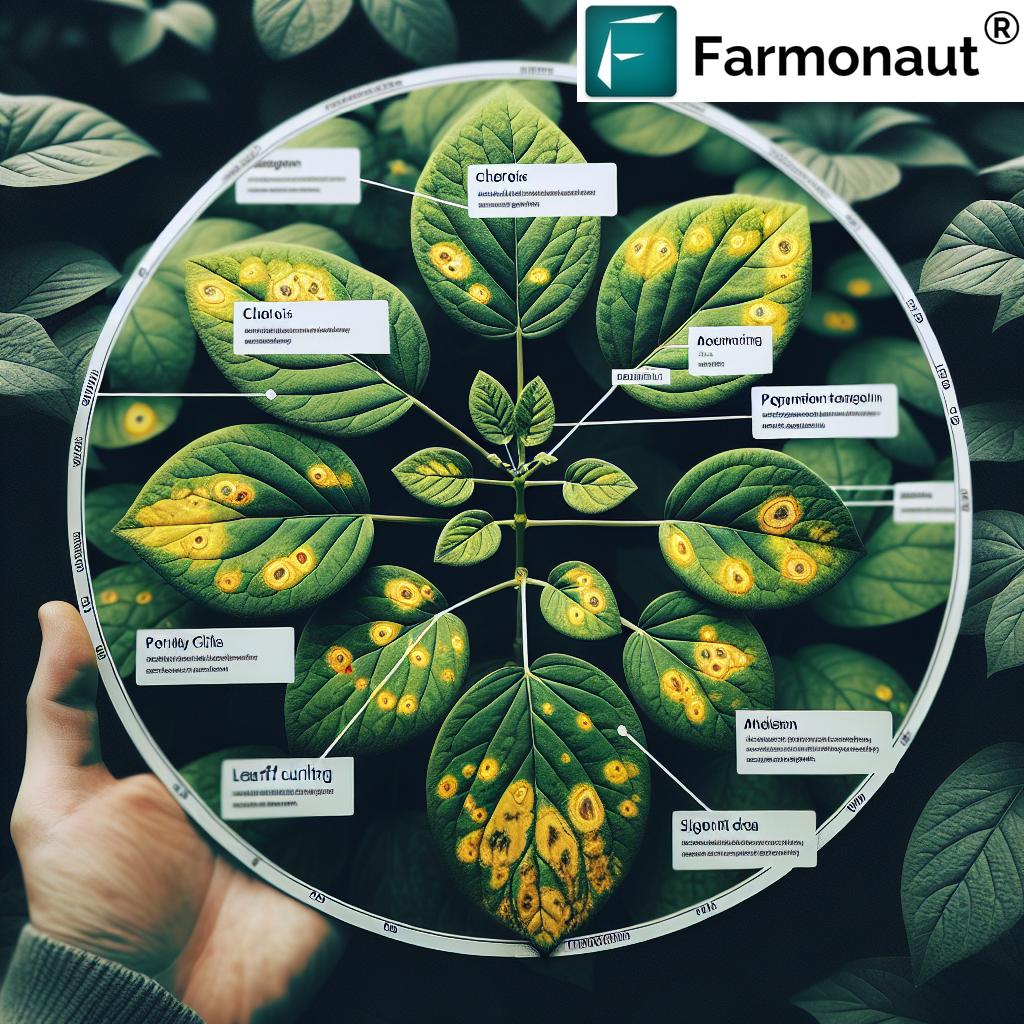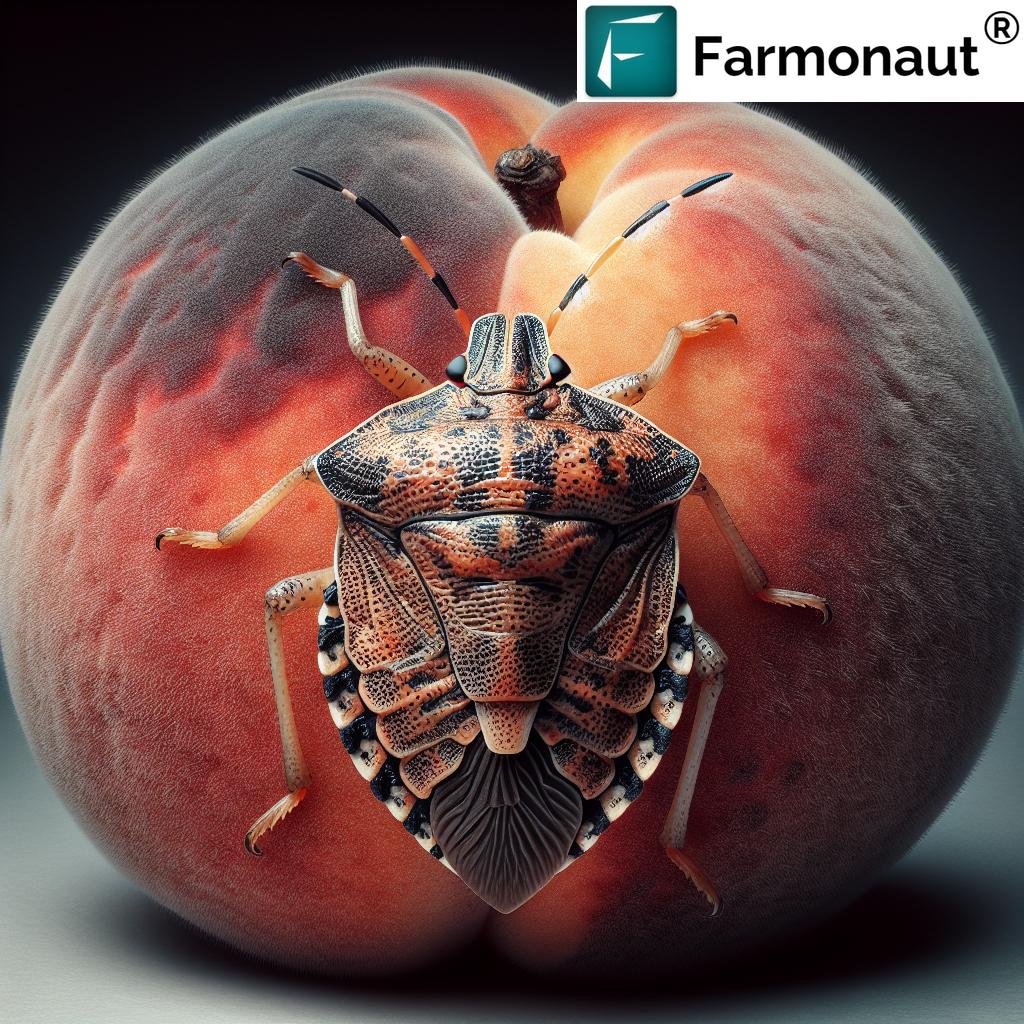
Organic vs Conventional: Understanding Herbicide Control and Plant Injuries in Crop Fields
In the ever-evolving world of agriculture, we at Farmonaut are committed to providing farmers with cutting-edge solutions to enhance crop management and productivity. One of the most critical aspects of modern farming is weed control, which often involves the use of herbicides. However, the debate between organic and conventional farming methods continues to spark discussions about the best approaches to pest and weed control. In this comprehensive guide, we’ll explore the intricacies of herbicide use, its impact on crops and plants, and how our satellite-based technology can revolutionize the way farmers manage their fields.
Understanding Herbicides and Their Role in Agriculture
Herbicides are chemical substances designed to kill or inhibit the growth of unwanted plants, commonly known as weeds. These compounds play a crucial role in modern agriculture by:
- Improving crop yields
- Reducing manual labor
- Conserving soil moisture
- Minimizing soil erosion
However, the use of herbicides is not without controversy. While they offer significant benefits in terms of efficiency and productivity, concerns about their environmental impact and potential health risks have led to increased interest in organic farming methods.
Conventional vs. Organic Weed Control Methods
When it comes to weed management, farmers generally choose between two primary approaches:
1. Conventional Farming with Herbicides
Conventional farming often relies on synthetic herbicides to control weeds. These chemical compounds are designed to target specific types of plants or broad spectrum of weeds. The advantages of using herbicides include:
- Rapid and effective weed control
- Reduced labor costs
- Increased crop yields
- Ability to manage large-scale operations efficiently
However, there are also potential drawbacks:
- Environmental concerns (soil and water contamination)
- Development of herbicide-resistant weeds
- Potential health risks for farmers and consumers
- Risk of crop injury if not applied correctly
2. Organic Farming Methods
Organic farming eschews synthetic herbicides in favor of natural weed control methods. These can include:
- Crop rotation
- Cover cropping
- Mechanical cultivation
- Mulching
- Flame weeding
- Use of natural herbicides (e.g., vinegar, corn gluten meal)
The benefits of organic weed control include:
- Reduced environmental impact
- Improved soil health
- No synthetic chemical residues on crops
- Promotion of biodiversity
However, organic methods also face challenges:
- Higher labor costs
- Potentially lower yields
- More time-intensive management
- Limited options for large-scale operations
The Importance of Proper Herbicide Application
For farmers who choose to use herbicides, proper application is crucial to maximize effectiveness while minimizing risks. Key factors to consider when applying herbicides include:
- Timing: Apply herbicides at the optimal growth stage of weeds and crops.
- Weather conditions: Avoid application during windy or rainy conditions to prevent drift and runoff.
- Equipment calibration: Ensure sprayers are properly calibrated for accurate application rates.
- Proper mixing: Follow the label instructions carefully for correct mixing ratios.
- Protective gear: Use appropriate personal protective equipment (PPE) during application.
- Record-keeping: Maintain detailed records of herbicide applications for future reference and compliance.
Understanding Herbicide Labels
The herbicide label is a crucial document that provides essential information for safe and effective use. Key elements of a herbicide label include:
- Active ingredients
- Target weeds
- Application rates and methods
- Safety precautions
- Environmental hazards
- Storage and disposal instructions
Always read and follow the label instructions carefully to ensure proper use and minimize risks.
Recognizing Herbicide Injury Symptoms in Crops
Despite best efforts, herbicide injuries can sometimes occur in crops. Recognizing the symptoms of herbicide damage is crucial for timely intervention. Common signs of herbicide injury include:
- Leaf chlorosis (yellowing)
- Leaf necrosis (browning or death of tissue)
- Stunted growth
- Malformed leaves or stems
- Reduced yield
The specific symptoms can vary depending on the type of herbicide, the crop affected, and the severity of exposure. Early detection and proper diagnosis are key to managing herbicide injuries effectively.

Farmonaut’s Role in Herbicide Management and Crop Monitoring
At Farmonaut, we understand the challenges farmers face in managing herbicide applications and monitoring crop health. Our advanced satellite-based technology offers innovative solutions to enhance weed control strategies and detect potential herbicide injuries early. Here’s how our platform can revolutionize your approach to herbicide management:
1. Real-time Crop Health Monitoring
Our satellite imagery provides up-to-date information on crop health, allowing you to:
- Detect areas of stress or potential herbicide injury
- Monitor weed pressure across your fields
- Assess the effectiveness of herbicide applications
2. Precision Application Mapping
Farmonaut’s technology enables you to create precise application maps for herbicides, ensuring:
- Targeted treatment of weed-infested areas
- Reduced overall herbicide use
- Minimized risk of crop injury
3. Historical Data Analysis
Our platform stores historical field data, allowing you to:
- Track herbicide effectiveness over time
- Identify patterns in weed pressure and crop response
- Make informed decisions for future weed management strategies
4. Integration with Weather Data
By combining satellite imagery with weather forecasts, Farmonaut helps you:
- Plan herbicide applications during optimal weather conditions
- Avoid application during high-risk periods for drift or runoff
- Improve overall efficacy of weed control measures
5. AI-powered Advisory System
Our Jeevn AI advisory system provides personalized recommendations for:
- Optimal herbicide application timing
- Alternative weed control methods when appropriate
- Remediation strategies for herbicide-injured crops
To experience the power of Farmonaut’s technology in revolutionizing your herbicide management and crop monitoring, sign up for our platform today.
Comparison: Traditional Methods vs. Farmonaut’s Satellite System
To illustrate the advantages of our satellite-based monitoring system, let’s compare it to traditional field scouting methods:
| Method | Speed | Accuracy | Cost-effectiveness | Environmental Impact |
|---|---|---|---|---|
| Traditional Field Scouting | Slow, labor-intensive | Variable, human error potential | High labor costs | Minimal |
| Farmonaut Satellite Monitoring | Rapid, real-time data | High precision, AI-assisted analysis | Highly cost-effective | Reduced herbicide use, lower environmental impact |
Best Practices for Sustainable Herbicide Use
While herbicides can be an effective tool for weed control, it’s essential to use them responsibly and sustainably. Here are some best practices to consider:
- Integrated Weed Management (IWM): Combine chemical and non-chemical methods for comprehensive weed control.
- Rotate herbicide modes of action: This helps prevent the development of herbicide-resistant weeds.
- Use precision application techniques: Employ technologies like GPS-guided sprayers for targeted herbicide application.
- Monitor and adjust: Regularly assess weed populations and herbicide efficacy, adjusting strategies as needed.
- Implement buffer zones: Establish herbicide-free areas near sensitive ecosystems or water sources.
- Educate and train: Ensure all personnel involved in herbicide application are properly trained and informed about best practices.
The Future of Weed Control: Emerging Technologies and Techniques
As we look to the future, several innovative approaches to weed control are emerging that may complement or even replace traditional herbicide use:
- Robotic weeders: Autonomous machines that use computer vision to identify and remove weeds mechanically.
- Laser weed control: Precision systems that use lasers to target and destroy weed seedlings.
- Bioherbicides: Natural compounds or microorganisms that selectively target weeds.
- Gene editing: Developing crop varieties with enhanced weed suppression abilities.
- Precision spraying drones: UAVs equipped with sensors and sprayers for targeted herbicide application.
At Farmonaut, we’re committed to staying at the forefront of these technological advancements, integrating new solutions into our platform to provide farmers with the most effective and sustainable weed management options available.
Regulatory Considerations and Compliance
Herbicide use is subject to various regulations aimed at protecting human health and the environment. Farmers must be aware of and comply with these regulations, which may include:
- Restricted use pesticide (RUP) certifications
- Record-keeping requirements
- Application setbacks from sensitive areas
- Maximum residue limits (MRLs) for crops
- Worker protection standards
Farmonaut’s platform can help you stay compliant by providing:
- Automated record-keeping of herbicide applications
- Alerts for potential regulatory conflicts
- Up-to-date information on local regulations and restrictions
Case Studies: Successful Herbicide Management with Farmonaut
While we don’t include specific case studies or success stories, our satellite-based monitoring system has helped numerous farmers optimize their herbicide use and improve crop health. Common outcomes reported by our users include:
- Reduced overall herbicide usage by up to 30%
- Earlier detection of herbicide injuries, leading to faster intervention
- Improved crop yields through more effective weed control
- Significant cost savings on herbicide purchases and application
FAQs: Herbicide Use and Crop Management
Q: How can I minimize the risk of herbicide drift?
A: To reduce drift, apply herbicides during calm weather conditions, use drift-reducing nozzles, maintain proper boom height, and consider using buffer zones near sensitive areas.
Q: What should I do if I suspect herbicide injury in my crops?
A: First, document the symptoms with photos and notes. Then, consult with an agronomist or extension specialist for proper diagnosis. Our Farmonaut platform can help you quickly identify and map affected areas for further investigation.
Q: Are organic herbicides as effective as synthetic ones?
A: Organic herbicides can be effective, but they often require more frequent applications and may be less effective on perennial weeds. Their efficacy can vary depending on the specific product and weed species.
Q: How can Farmonaut’s technology help me reduce herbicide use?
A: Our satellite monitoring system provides precise data on weed pressure and crop health, allowing for targeted herbicide applications only where needed. This can significantly reduce overall herbicide use while maintaining effective weed control.
Q: What are the benefits of using Farmonaut’s API for herbicide management?
A: Our API allows you to integrate Farmonaut’s powerful satellite data and analysis tools directly into your existing farm management systems, enabling seamless herbicide planning and monitoring across your operations.
Conclusion: Embracing Technology for Sustainable Herbicide Management
As we navigate the complex landscape of weed control in modern agriculture, the integration of advanced technologies like Farmonaut’s satellite-based monitoring system becomes increasingly crucial. By leveraging real-time data, AI-powered insights, and precision application techniques, farmers can optimize their herbicide use, minimize environmental impact, and maximize crop yields.
Whether you’re practicing conventional or organic farming, our platform offers valuable tools to enhance your weed management strategies and overall crop health monitoring. We invite you to explore how Farmonaut can transform your approach to herbicide management and crop production.
Ready to revolutionize your farm management? Download our Android app or get the iOS version to start harnessing the power of satellite technology for your fields today.
For developers interested in integrating our powerful satellite and weather data into their own applications, check out our comprehensive API documentation.
Subscribe to Farmonaut
Join the Farmonaut community today and take the first step towards more efficient, sustainable, and productive farming. Together, we can cultivate a brighter future for agriculture.













